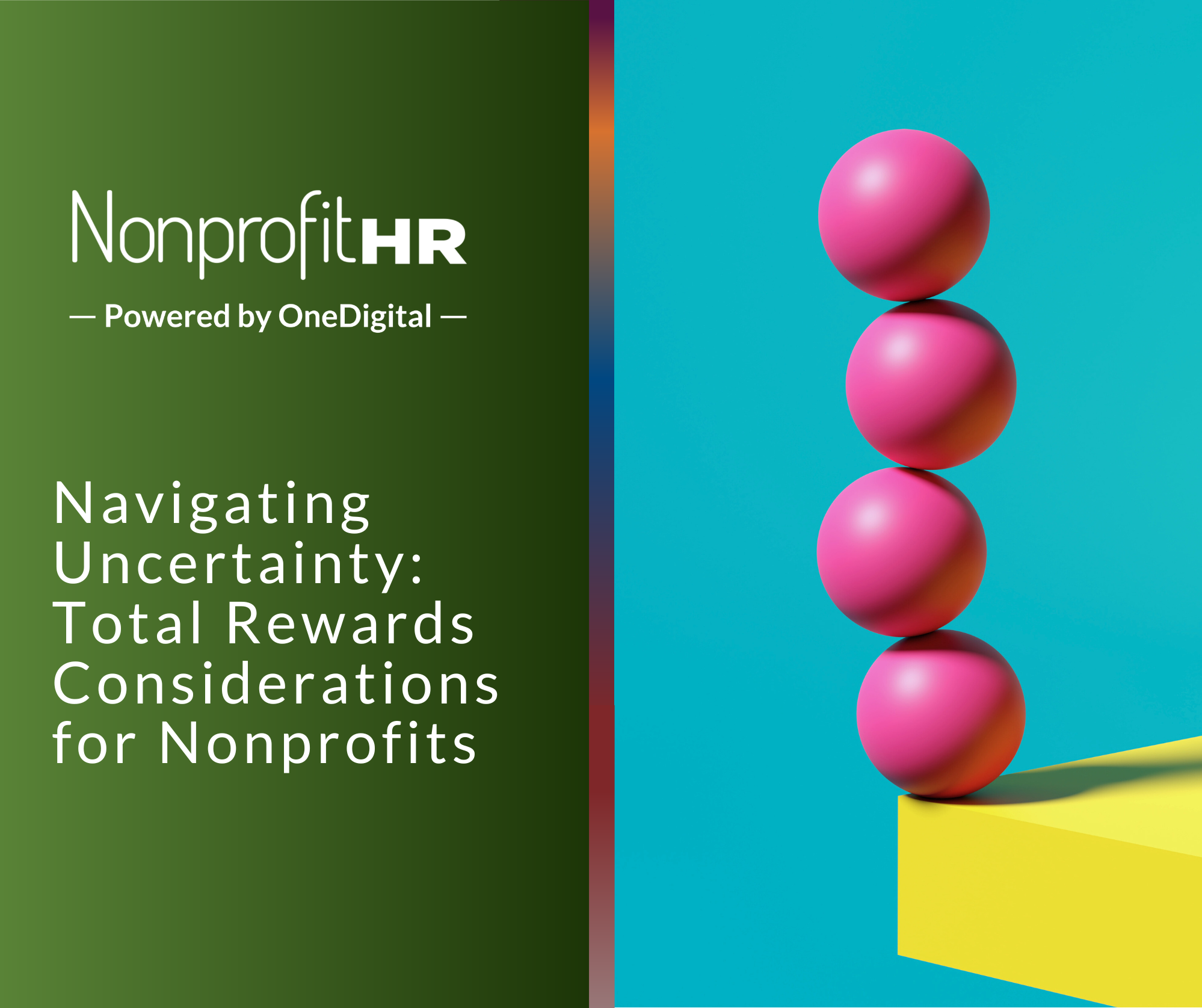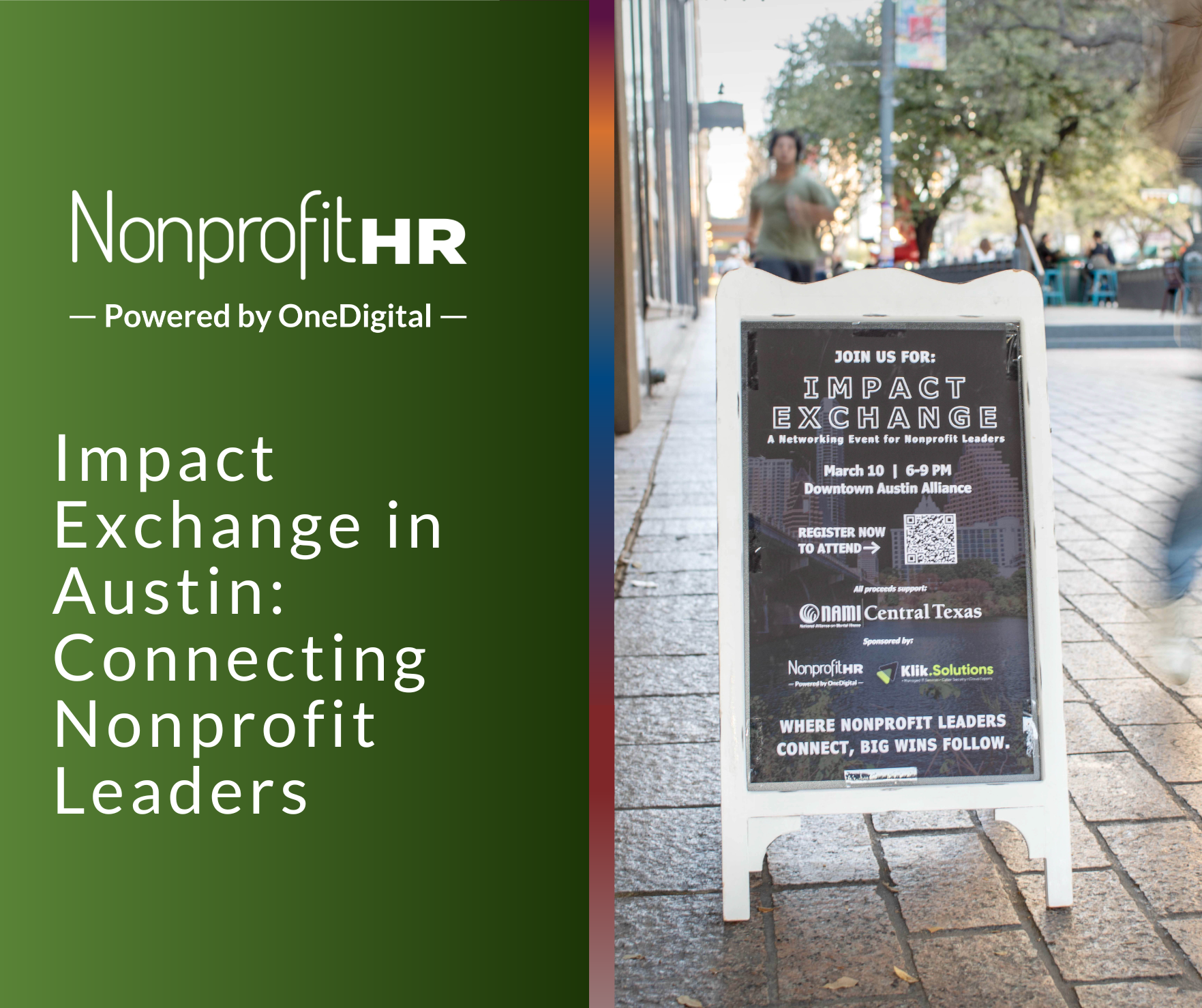WTOP: 5 ways nonprofits can…
Amid the increased focus on remote and hybrid work over the past two years, many employers have found that their performance management systems are not keeping pace with the needs of their organizations. In the face of dissatisfaction with the outcomes of performance management sessions (whether they are reviews or take place in another format), returning to the goal of performance management can help. By emphasizing a focus on continuous improvement and increasing communication and transparency between employees and their managers, leadership teams can evaluate their current system and build an effective process tailored to their organization’s needs.
Many older styles of performance management relied on managers seeing their employees every day in the office. But this technique has become increasingly impracticable as more and more work environments move to hybrid or virtual. It is also unreliable for teams that involve highly specialized work, where some people managers may not have detailed knowledge of their direct reports’ daily tasks. In addition, many jobs are not quantitative in nature. Managers then have to find ways to translate their team’s work into something that can be described in quantifiable measurements.
To start the process of evaluating a performance management system, leadership teams need to assess what is actually going on in their organization at present. One starting point is to have a simple, honest conversation, asking themselves and their HR teams:
What specific feedback mechanism do we currently use, and what is or isn’t working?
Conducting an evaluation of the way performance reviews are handled can improve functionality and effectiveness of a performance management system. The evaluator can start by considering how the methods for completing and outcomes of the reviews relate to the needs of managers, direct reports, the HR team and the organization’s leadership.
At their best, performance management systems can provide a reliable tool for organizations to increase employee engagement through transparency and communication on goals and improvement. Employee engagement is one way of looking at the employee’s sense of progress in themselves and their organization. Ideally, this sense of progress will continue to evolve and expand during the employee’s time with the organization.
One way of addressing the disconnect between performance management and employee engagement is to move from a performance review system based on ratings and metrics toward conversation check-ins that are more casual and frequent. Some organizations find that formally changing the language around this event from “reviews” to “touchpoints” or something similar can help emphasize the shift in approach for their organizational culture.
Feedback is a powerful tool that is usually not used as frequently or effectively as it can be within a performance management system. Shifting the focus to making reviews a conversation, rather than consisting of a rating number and a few generic comments, can be incredibly helpful. This requires that the manager also be open to receiving feedback, which they might need coaching on. Sometimes it takes work to learn how to offer positive feedback, as well. Managers may not have practice in providing substantive feedback, especially if they were recently promoted and are now supervising former peers.
Get detailed when it comes to feedback in performance evaluation.
Regardless of whether the feedback is constructive or congratulatory, it should be specific. The employee should leave a review or touchpoint session feeling clear on what it is specifically that they are doing well and what could be improved.
One of the strong advantages of a feedback-based performance management system is that it helps shift both managers and employees toward a development and coaching/mentoring mentality. By not waiting to have that conversation annually, there are many more timely opportunities for managers to share thoughts on employees’ progress and opportunities for continued growth. This system means that the employer has to be more intentional. There is a need for reflection and clear articulation in the feedback model, which requires managers to develop and hone their feedback delivery skills.
For some organizations, this shift away from strictly rewarding behaviors can feel challenging, especially at first. It is important to have clearly articulated goals, and to allow grace as the organization is making the shift. For smaller organizations who are experiencing growth changes, there could be a challenge of things feeling too “corporate.” However, continuous feedback is a great model for organizations that are growing because it allows for ongoing adjustment as managers’ and employees’ needs change.
Some studies show that 360 models may not be as effective as they once were thought to be. Overall, performance management is becoming more tailored to each individual organization, so that there’s not a “standard” model that applies to any organization.
The continuous feedback model is the model we champion at Nonprofit HR because of its flexibility, effectiveness and potential to increase inclusiveness. According to SHRM, continuous feedback solutions improved collaboration, coaching, decision making, agility, skills, acquisition, retention and, most importantly, employee engagement.
In order to create a successful culture of continuous feedback, here are some helpful guidelines to keep in mind:
- The HR and executive team should make sure that managers are adequately trained in giving feedback.
- The feedback itself should be specific and have substance.
- New managers should receive coaching and support in also learning how to receive feedback.
It can take some time to allow people to open up to this idea and get comfortable with it. Both leadership and HR will need to allow grace for teams to practice and develop proficiency with feedback-related skills. Remembering to frame it as a conversation can help both employees and managers to stress less about the process and instead proactively look for ways to connect and find actionable takeaways within their sessions.
Shifting to performance-based evaluations offers many opportunities for growth. For some organizations, it could mean bringing their values into play—and tying their business goals back to their overall values. It also supports an organization by organically allowing multiple touchpoints each year around achieving goals, rather than saving everything for an end-of-year conversation which might end up being more focused on summation than actionable outcomes. Basing performance management on a conversation also encourages teams to come together in setting their own goals.
All types of feedback can be helpful, as long as they are specific and actionable. Some organizations include peer-to-peer feedback, which helps support their focus on professional development. However, different organizations have different outlooks, so it is important to ask where your organization sees the most benefit and where lateral feedback might play into the overall dynamic. One of the greatest benefits of feedback-based evaluation is that it allows the employee to self-reflect. This can help them see more clearly where and how they’re showing up in their organization and culture.
When should an organization seek help with their evaluation process?
Don’t wait until major problems make an appearance to decide that your performance management system needs to be updated. Evaluations should be ongoing, regardless of which type of system is being used. The HR team needs to review these and evaluate for effectiveness and impact; in every case, make sure the outcomes are actionable and contain substance.
Some organizations might wonder where to start when creating buy-in with staff. Explaining why a shift in the evaluation process was undertaken and communicating the goals to employees will help to get them onboard. And it might not be as hard to convince employees of the value of changing from traditional annual reviews as you might think. Many of them are already struggling with the traditional models for evaluation and would welcome a change.
What is the biggest hurdle in implementing a continuous feedback model?
In some ways, this shift is easier to implement with smaller organizations; often, the only real step is pitching it to the employees and getting their buy-in. For larger organizations, there might need to be a more incremental process put in place, starting with the managers.
It is helpful here to remember that change management is always based on employee feedback, surveys and things that the organization feels need to be changed. Start by getting feedback from everyone in the organization on what’s working and not. Then, work with the HR and leadership teams to discuss and process feedback at all levels. It’s important to get that feedback and buy-in during the implementation period. One thing to remind employees of is that this change is ultimately being made to improve the experience for each person in the organization.
Leaders may want to move away from a more traditional “grading” system and at the same time fear meeting resistance to change from their team. One way to respond to this fear is by assuring managers that the goal is to arrive at an improved process. The purpose of this change is to arrive at something better, not simply to have change for its own sake.
At the end of the day, a performance management system is about developing the employee.
Administrators can reduce bias and increase inclusivity by using appropriate parameters. Based on the needs of the organization, and respecting the leadership of the manager, having parameters in place allows the evaluation process to be equitable and based on a clearly defined system (ratings, etc.) rather than on subjective criteria or favoritism.
Seek outside expertise when you need it.
It’s never a good practice to try and create solutions in a vacuum, especially when so many other organizations with comparable profiles are facing similar challenges. Use the many available systems, processes, tools and resources that are available. Doing this sooner rather than later is going to help you figure out any issues with your existing system more quickly, which can then guide you to find the solutions that best fit your organization’s needs.
If you have an active engagement with Nonprofit HR, please reach out to your point of contact and ask how they can support you in your performance management analysis and shift. And if you aren’t currently working with a consultant, we’d love to hear more about your organization, your current evaluation process and any ways that we can support you.





























